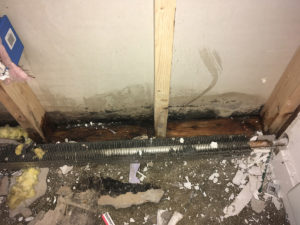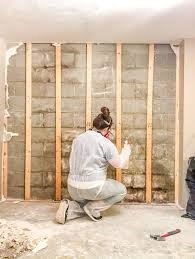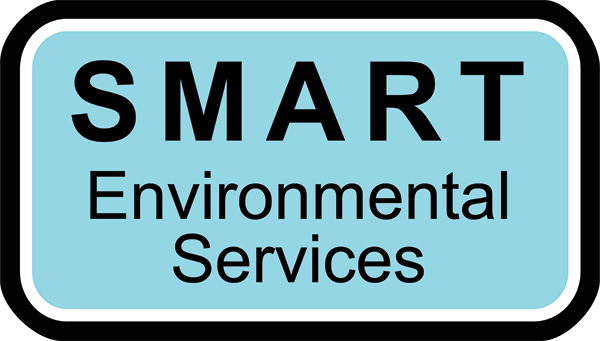Mold removal in Kansas City for your home or business should be dealt with professionally and as quickly as possible due to the potential of health risks. Mold levels have adverse effects on someone’s health from the production of allergens and irritants, and in some cases, potentially toxic substances (mycotoxins). Exposure to mold may cause allergic reactions such as sneezing, runny nose, red eyes, and skin rash (dermatitis). Some issues related to organs, if left untreated, can develop into more serious medical problems. Mold exposure for individuals with immune deficiencies are at a higher risk of health problems from mycotoxin poisoning.
 Mold spores are microscopic, entering your home or building through open windows and doors, HVAC systems, water intrusions, or even on soft good materials (including clothing) or pets. When your HVAC system is contaminated with mold it can quickly infiltrate the air inside. Mold thrives on humidity, moisture, and from water sources, which can spread throughout the building in a matter of hours, producing allergens and irritants. Therefore, the source of the mold should be identified and stopped. It is highly recommended that water removal be completed by a professional mitigation company to ensure thorough and proper drying of all building materials in order to prevent mold growth. Any contaminated materials must also be removed or cleaned up to prevent fungi from spreading.
Mold spores are microscopic, entering your home or building through open windows and doors, HVAC systems, water intrusions, or even on soft good materials (including clothing) or pets. When your HVAC system is contaminated with mold it can quickly infiltrate the air inside. Mold thrives on humidity, moisture, and from water sources, which can spread throughout the building in a matter of hours, producing allergens and irritants. Therefore, the source of the mold should be identified and stopped. It is highly recommended that water removal be completed by a professional mitigation company to ensure thorough and proper drying of all building materials in order to prevent mold growth. Any contaminated materials must also be removed or cleaned up to prevent fungi from spreading.
Mold can show on surfaces and can also be airborne because they are microscopic which means you can’t necessarily see mold with the naked eye. Depending on the type and amount of mold that is present on the surfaces or in the atmosphere, the process for mold removal can vary. Mycotoxins can continue to be released into the atmosphere even when removing or treating the visible mold on surfaces. Therefore, consideration should be made to treat the mold in the air if, in fact, the mold has become airborne in order to kill the mold. Utilizing proper safety measures, including wearing PPE (personal protective equipment), proper containment, and taking steps to avoid mold cross-contamination are essential to the process.

- Collaborating with industrial hygienists to obtain accurate mold test results when necessary.
- Demolition if required to remove visible mold.
- Utilizing specialty equipment to remediate the airborne mold.
- Use of approved biocides, mildewcides, and fungicides to kill mold.
- Use of encapsulants to prevent future mold growth.
SMART Environmental Services LLC
913-355-5303
Posted in Mold Removal

